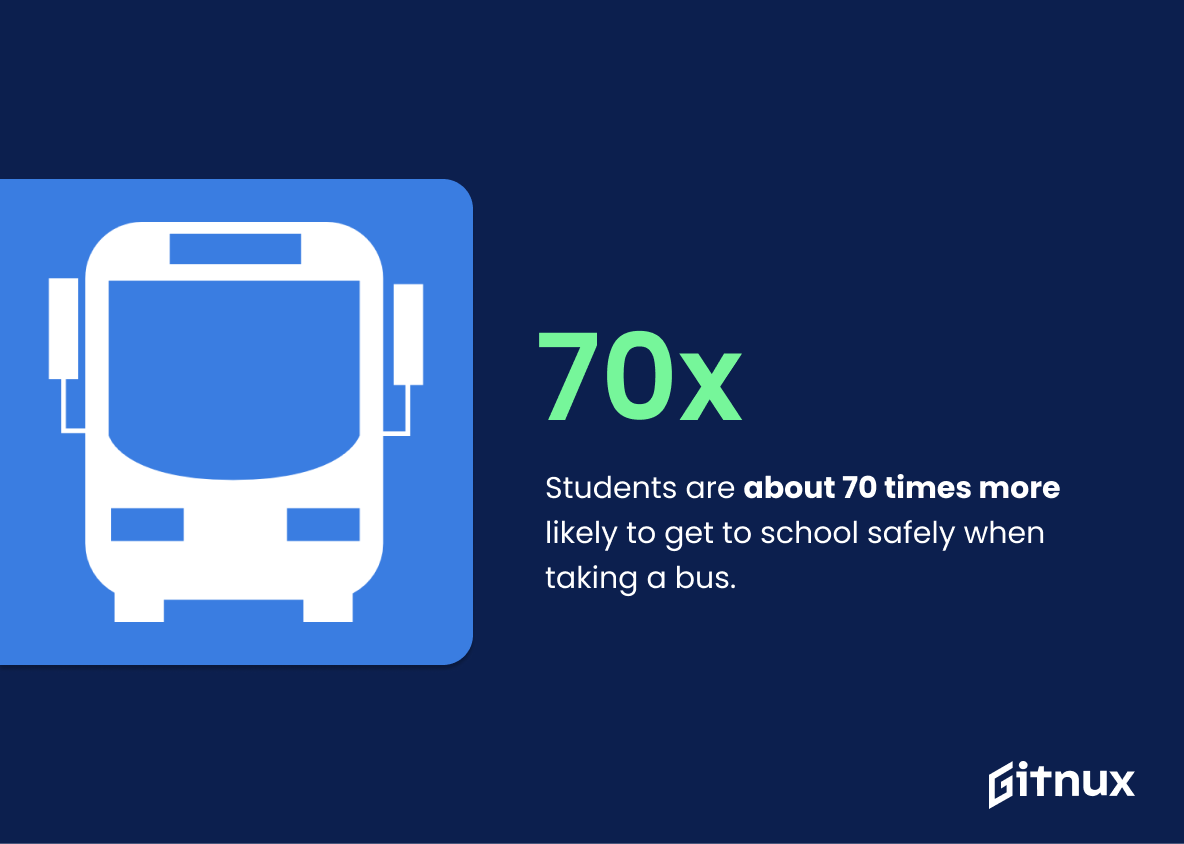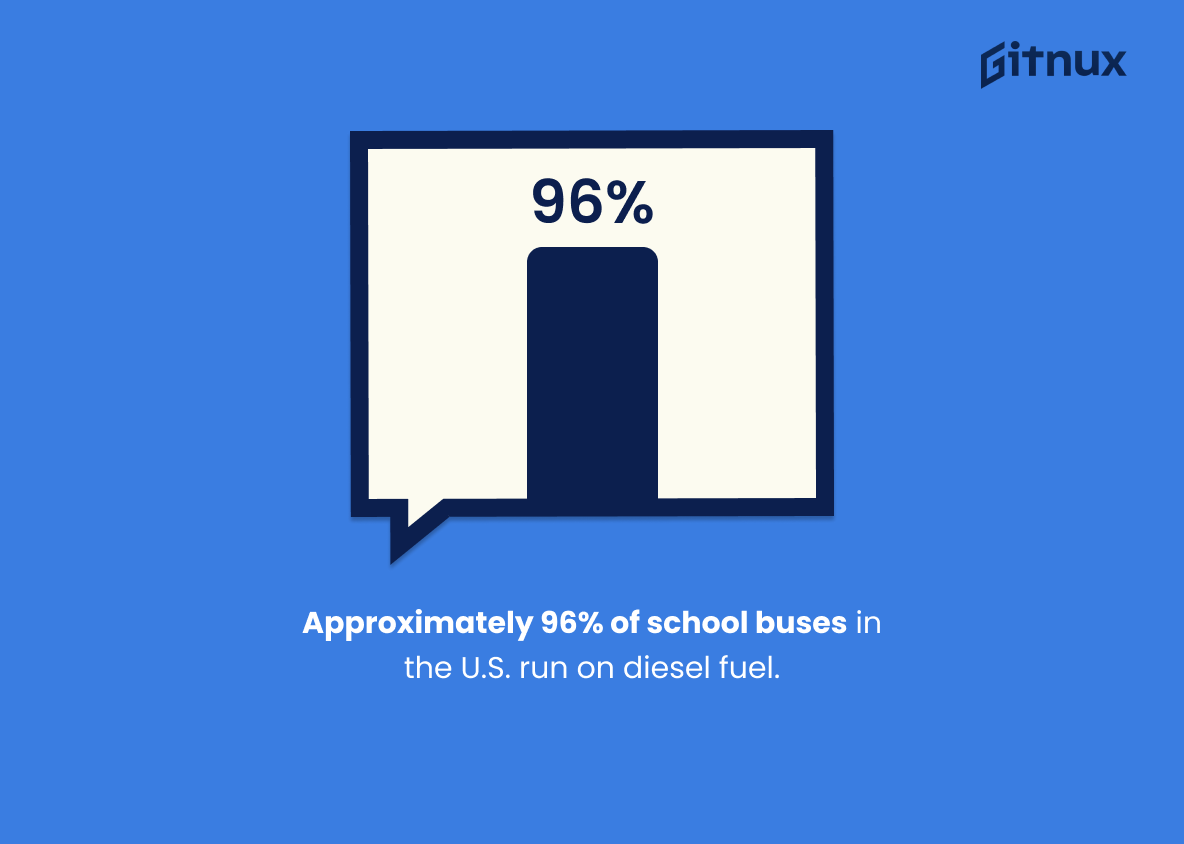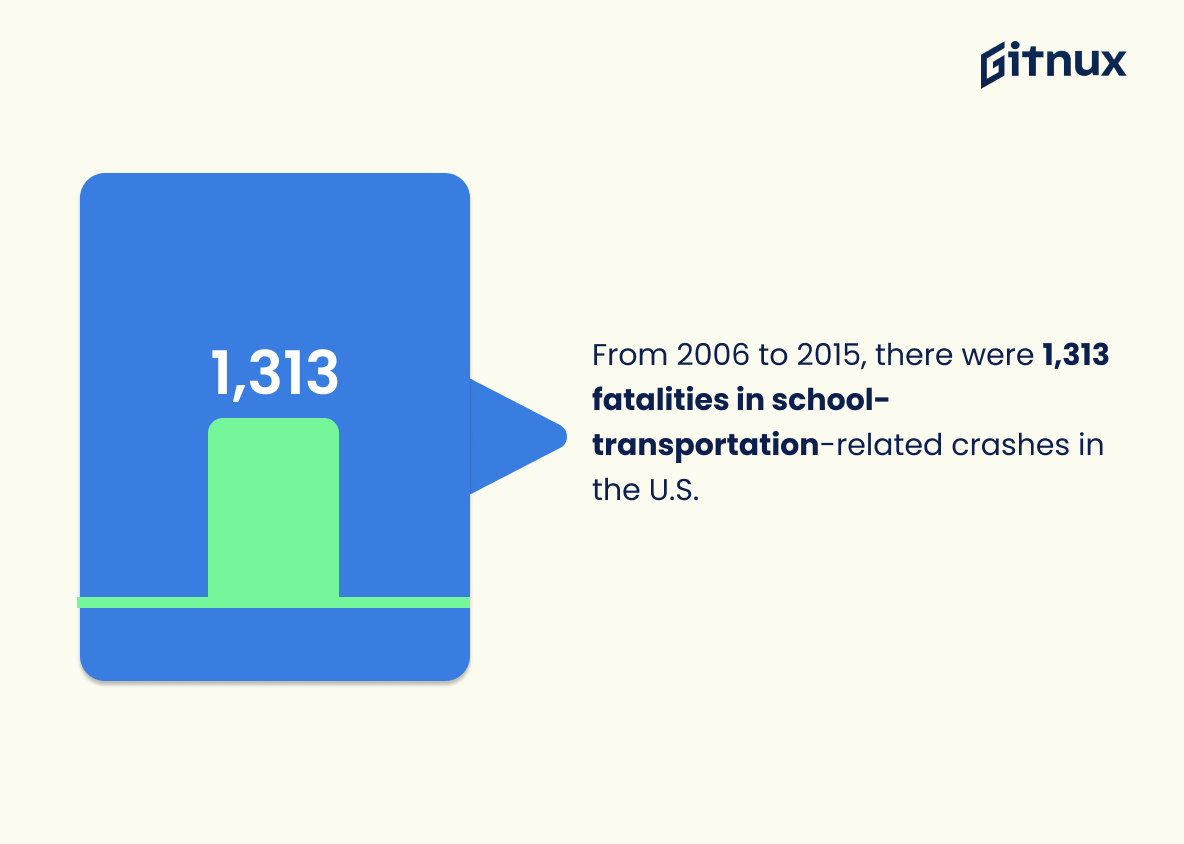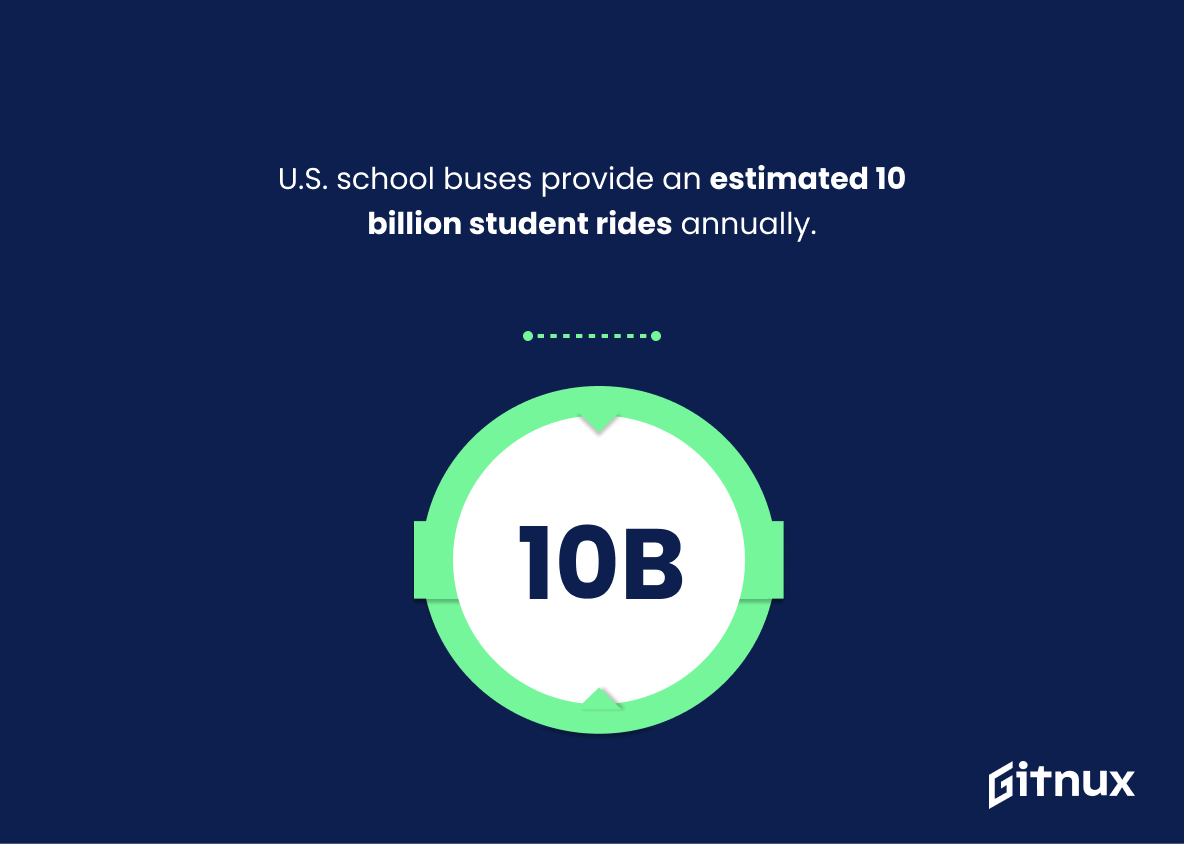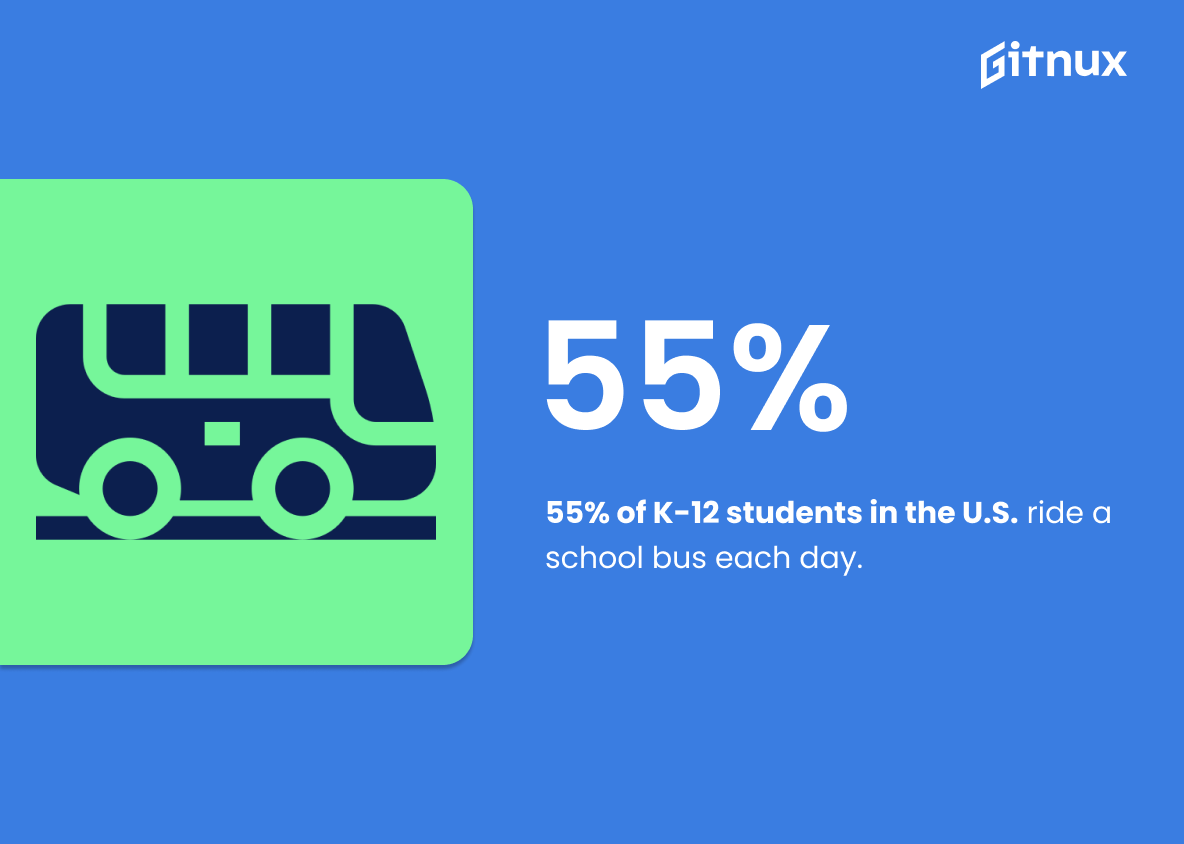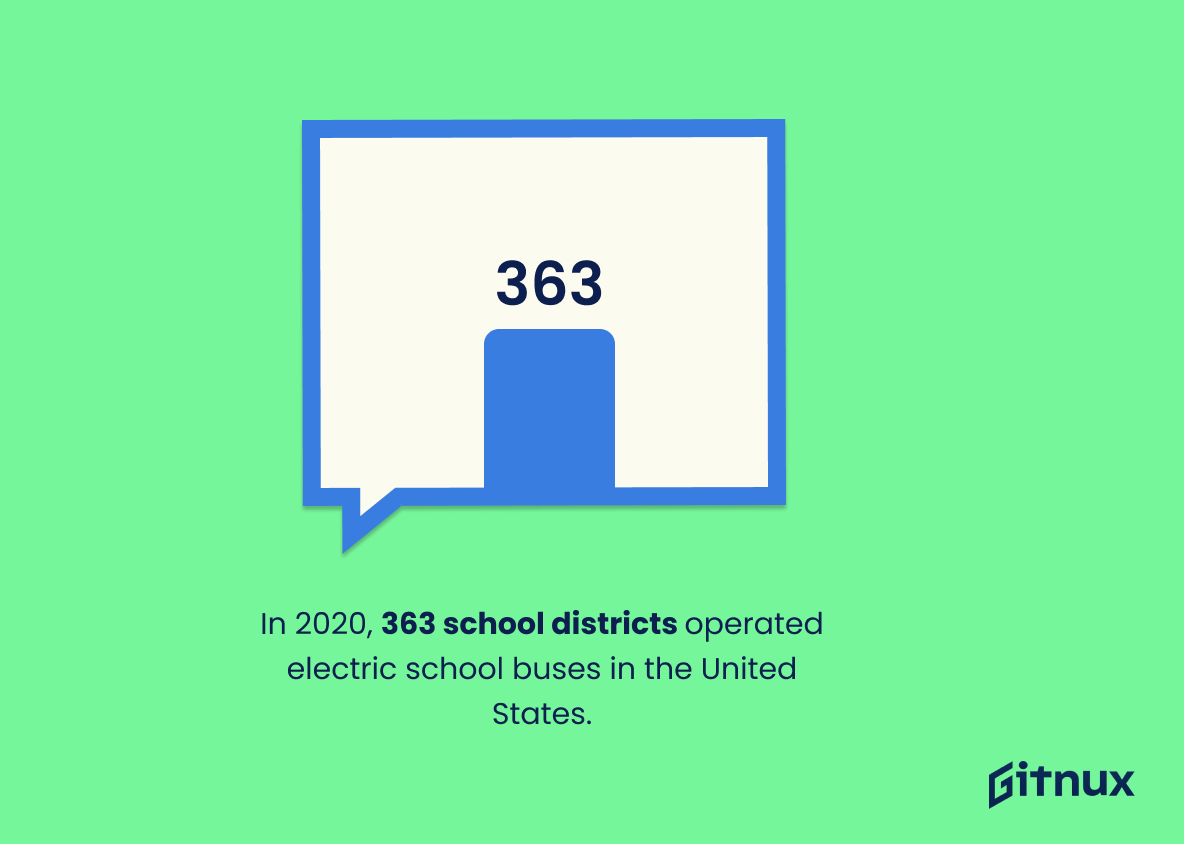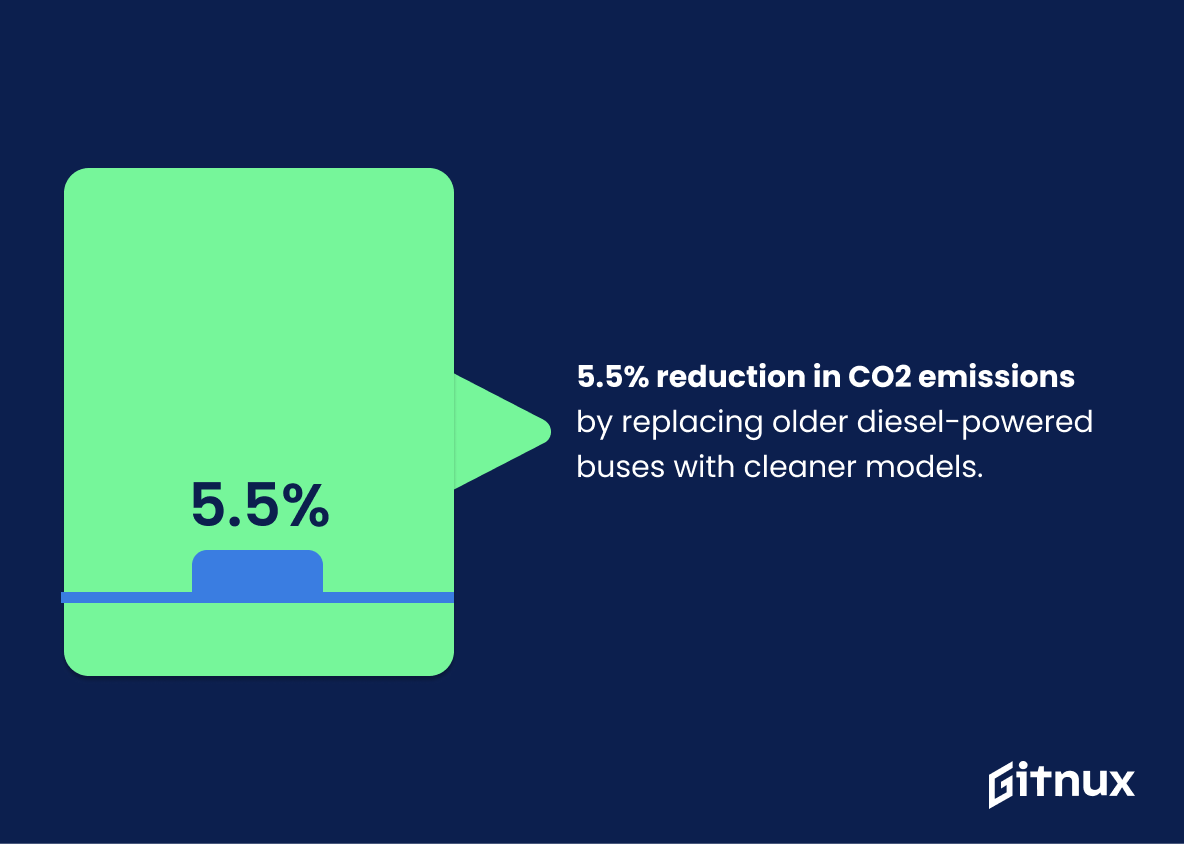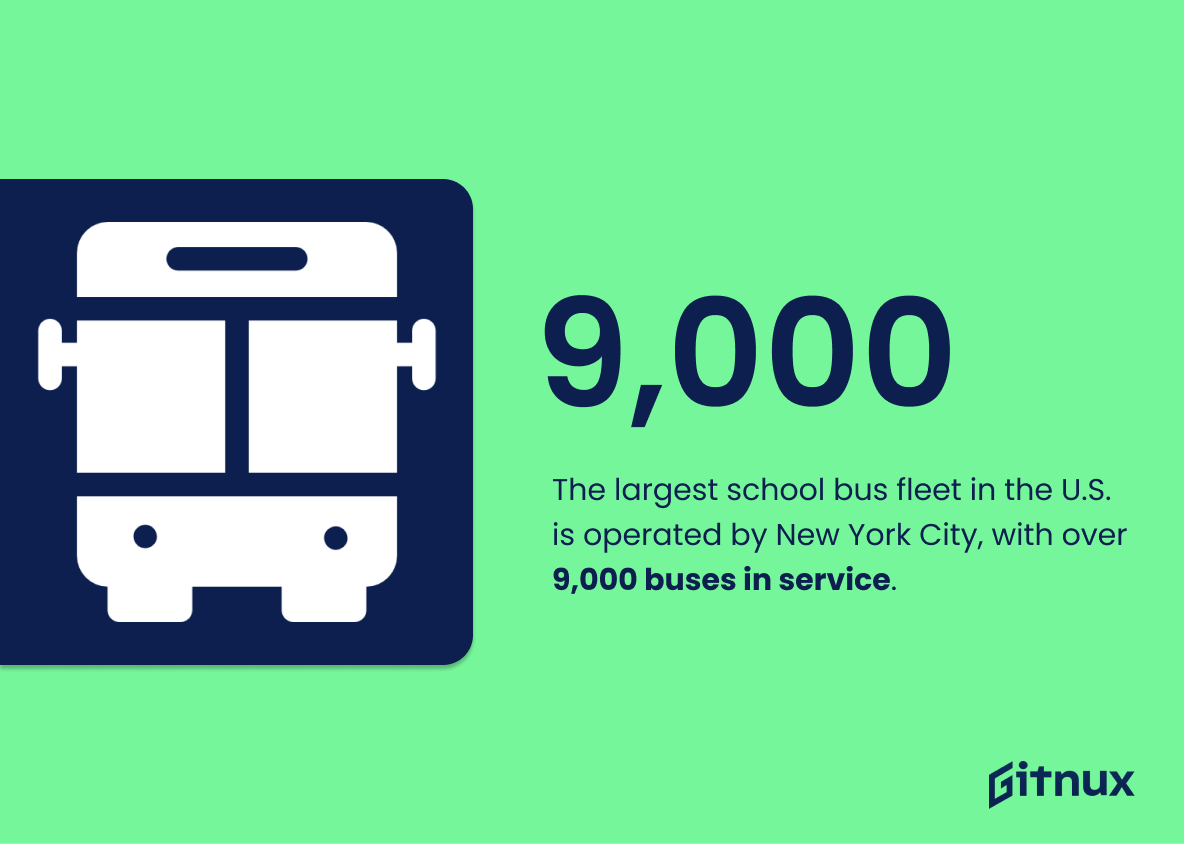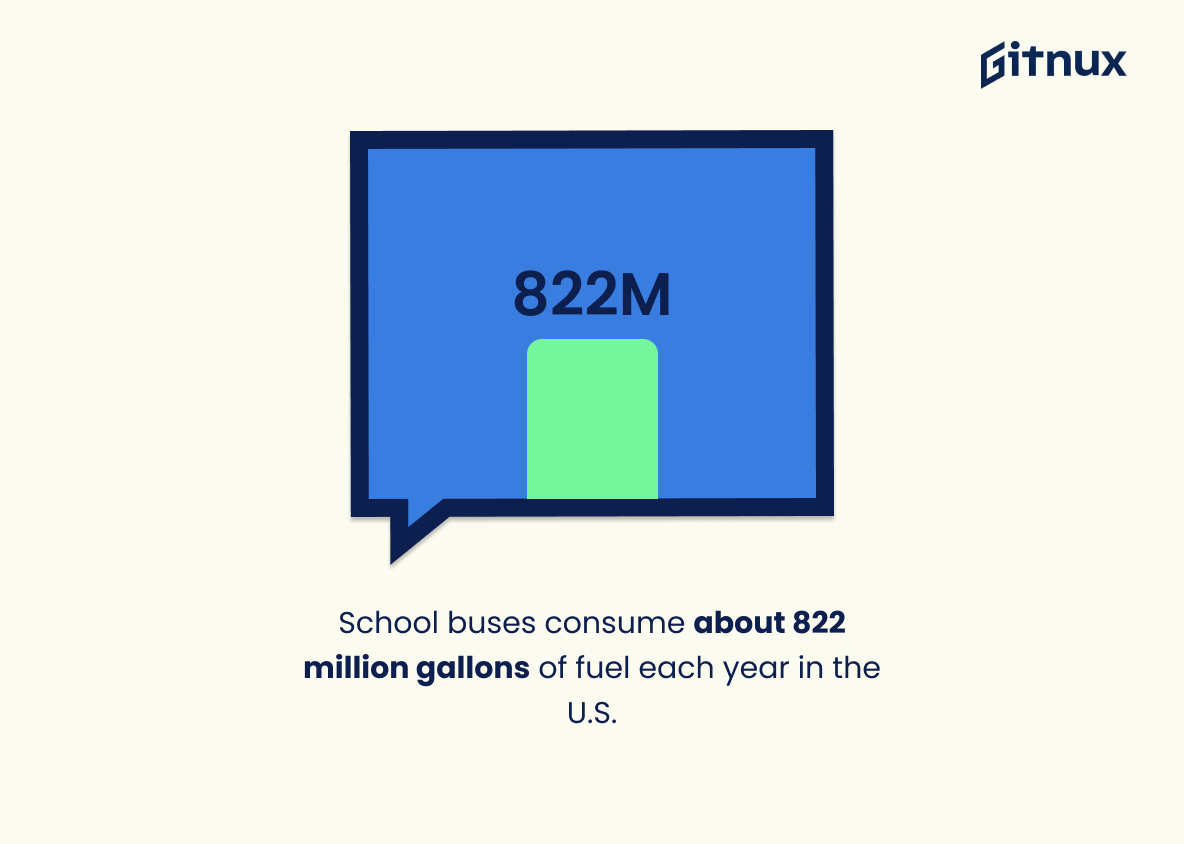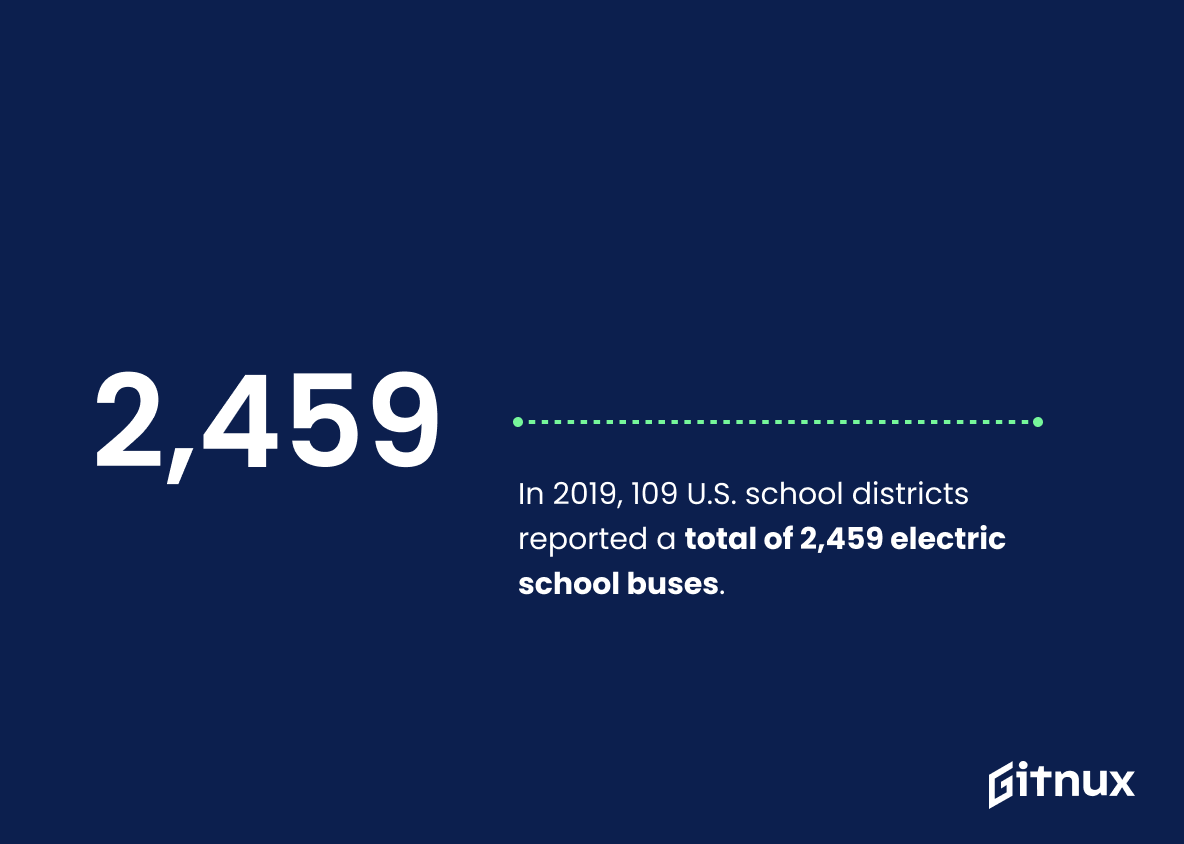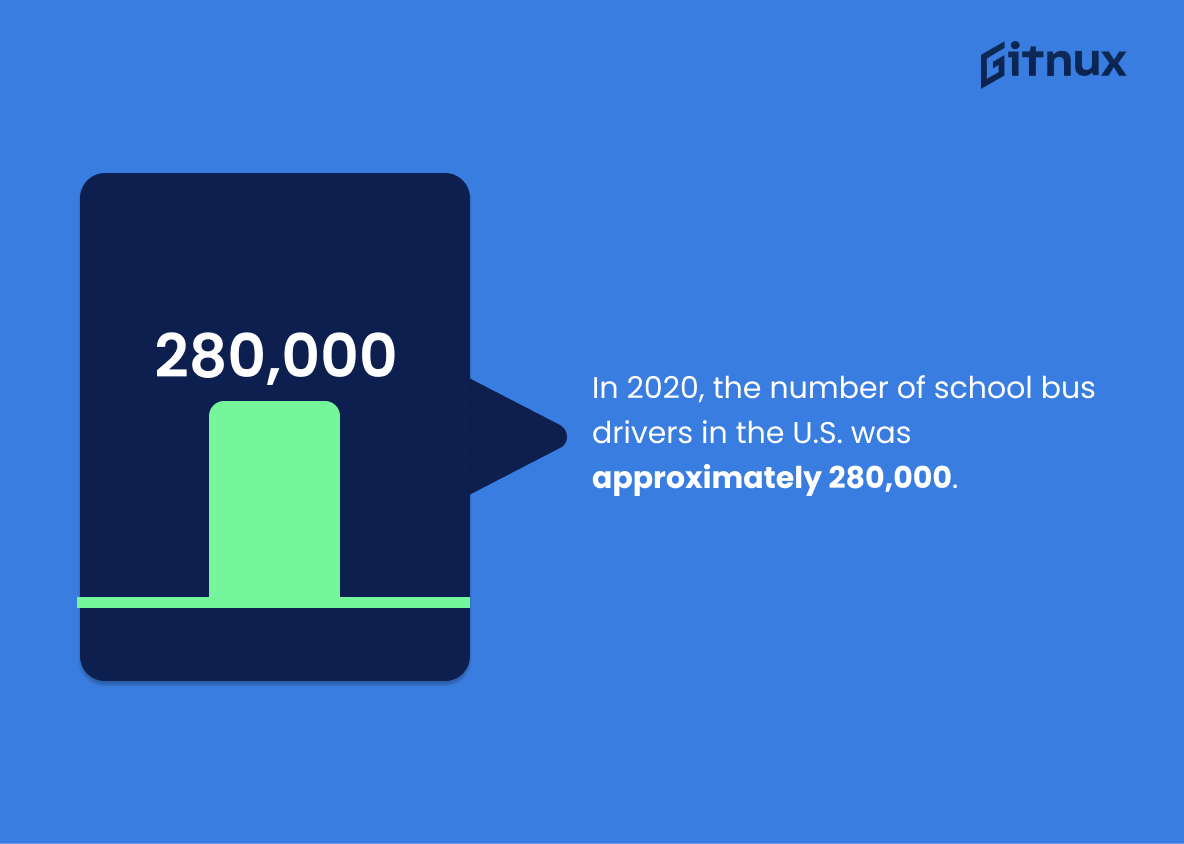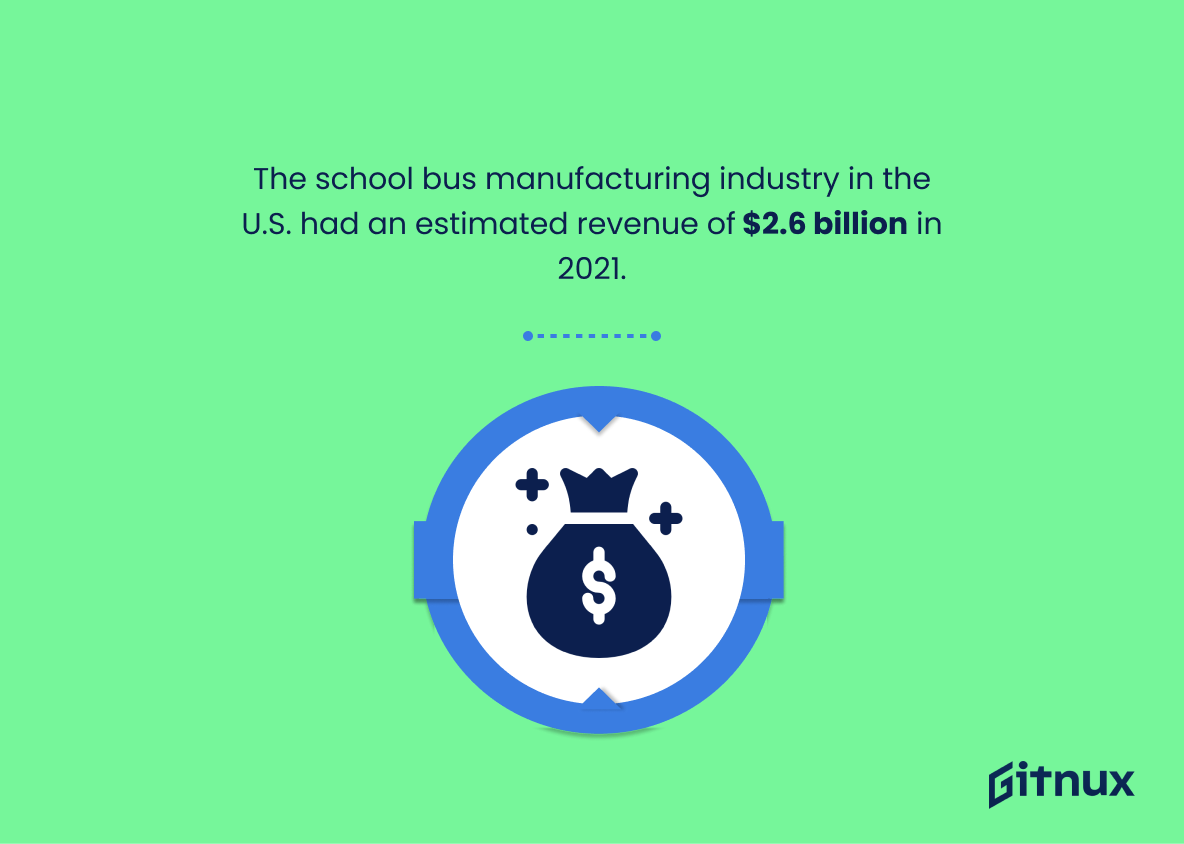School buses are an integral part of the American education system, providing safe and reliable transportation for millions of students each year. With over 480,000 school buses operating in the United States alone, it is important to understand how these vehicles impact our lives. This blog post will explore some interesting statistics about school bus usage in the U.S., including information on ridership numbers, fuel types used by buses, safety measures taken to protect passengers and drivers alike, as well as environmental benefits associated with their use. We’ll also look at data related to revenue generated from manufacturing new school buses and fatalities resulting from crashes involving them. So let’s dive into this fascinating topic.
School Bus Statistics Overview
Students are about 70 times more likely to get to school safely when taking a bus.
This statistic is a powerful reminder of the importance of school buses in ensuring the safety of students. It highlights the fact that taking a bus to school is a much safer option than other forms of transportation, and that it should be taken into consideration when planning for student transportation. It also serves as a reminder that school buses are an invaluable resource for keeping students safe and secure while they travel to and from school.
Approximately 96% of school buses in the U.S. run on diesel fuel.
This statistic is significant in the context of school bus statistics because it highlights the importance of diesel fuel in the transportation of students to and from school. It demonstrates the reliance of school buses on diesel fuel, and the need for efficient and reliable fuel sources to ensure the safety of students.
Approximately 4% of school buses are alternative fuel models, including propane, CNG, and electric options.
This statistic is a testament to the progress being made in the school bus industry towards more sustainable transportation. With 4% of school buses now being alternative fuel models, it is clear that the industry is taking steps to reduce its environmental impact. This is an encouraging sign for the future of school bus transportation.
From 2006 to 2015, there were 1,313 fatalities in school-transportation-related crashes in the U.S.
This statistic serves as a stark reminder of the dangers of school transportation-related crashes in the U.S. over the past decade. It highlights the need for increased safety measures and awareness when it comes to school bus travel, and serves as a call to action for parents, school administrators, and lawmakers to take steps to ensure the safety of our children.
U.S. school buses provide an estimated 10 billion student rides annually.
This statistic is a testament to the sheer magnitude of the school bus system in the United States. It is a reminder of the immense responsibility that school buses have in providing safe and reliable transportation for students across the country. It also highlights the importance of investing in school bus infrastructure and safety measures to ensure that these 10 billion student rides are as safe and comfortable as possible.
55% of K-12 students in the U.S. ride a school bus each day.
This statistic is a powerful indicator of the importance of school buses in the lives of K-12 students in the U.S. It speaks to the fact that school buses are a vital part of the educational system, providing a safe and reliable way for students to get to and from school each day. It also highlights the need for continued investment in school bus infrastructure and services, as well as the need for improved safety measures to ensure the safety of students while they are on the bus.
In 2020, 363 school districts operated electric school buses in the United States.
This statistic is a testament to the growing trend of electric school buses in the United States. It shows that more and more school districts are making the switch to electric buses, which is a positive step towards reducing emissions and improving air quality. This statistic is a sign of progress and a reminder that we can make a difference when it comes to protecting our environment.
About 40% of school bus-related deaths of students are caused by side impact.
This statistic is a stark reminder of the dangers of side impacts when it comes to school bus-related deaths of students. It highlights the importance of taking extra precautions to ensure the safety of students when they are travelling on school buses. It also serves as a warning to drivers to be extra vigilant when driving near school buses, as even a minor collision can have devastating consequences.
5.5% reduction in CO2 emissions by replacing older diesel-powered buses with cleaner models.
This statistic is a testament to the positive impact that replacing older diesel-powered buses with cleaner models can have on the environment. A 5.5% reduction in CO2 emissions is a significant step towards reducing the amount of greenhouse gases released into the atmosphere, and it is a great example of how small changes can make a big difference.
More than 90 U.S. cities and towns use school buses as emergency evacuation tools.
This statistic is a testament to the importance of school buses in emergency situations. It highlights the fact that school buses are a reliable and efficient way to evacuate large numbers of people in a short amount of time. This is especially important in the context of a blog post about school bus statistics, as it demonstrates the versatility and utility of school buses in a variety of situations.
The largest school bus fleet in the U.S. is operated by New York City, with over 9,000 buses in service.
This statistic is a testament to the importance of school bus transportation in New York City. With over 9,000 buses in service, it is clear that the city is committed to providing safe and reliable transportation for its students. This statistic also highlights the need for efficient and effective school bus fleets in other cities across the country, as New York City is setting a high standard for school bus fleets.
School buses consume about 822 million gallons of fuel each year in the U.S.
This statistic is a stark reminder of the sheer amount of fuel consumed by school buses each year in the United States. It highlights the need for more efficient and sustainable transportation solutions for students, as well as the potential for reducing emissions and improving air quality. It also serves as a reminder of the importance of investing in public transportation infrastructure, as school buses are a major component of this system.
In 2019, 109 U.S. school districts reported a total of 2,459 electric school buses.
This statistic is a testament to the growing trend of electric school buses in the United States. It shows that more and more school districts are investing in electric buses, which is a positive step towards reducing emissions and improving air quality. This statistic is a great example of how the US is taking action to reduce its environmental impact.
In 2020, the number of school bus drivers in the U.S. was approximately 280,000.
This statistic is a telling indication of the importance of school bus drivers in the U.S. With nearly 300,000 drivers, it is clear that school buses are a vital part of the transportation infrastructure in the country. This statistic is a reminder of the importance of school bus drivers in providing safe and reliable transportation for students.
The school bus manufacturing industry in the U.S. had an estimated revenue of $2.6 billion in 2021.
This statistic is a testament to the success of the school bus manufacturing industry in the U.S. in 2021. It shows that the industry is thriving and that it is a major contributor to the economy. It also highlights the importance of school buses in providing safe and reliable transportation for students. This statistic is a great reminder of the importance of investing in the school bus industry and the positive impact it can have on our communities.
In 2018, there were 130 fatal crashes involving school buses in the U.S.
This statistic serves as a stark reminder of the importance of school bus safety. It highlights the need for continued vigilance and proactive measures to ensure the safety of students and other passengers on school buses. It also serves as a call to action for parents, school administrators, and lawmakers to take steps to reduce the number of fatal crashes involving school buses.
Conclusion
School buses are an integral part of the U.S. transportation system, providing safe and efficient transport for millions of students each year. The statistics show that there are approximately 480,000 school buses operating in the United States, with 26 million students riding them annually; these vehicles save over 62 billion Vehicle Miles Traveled (VMT) per year and make it 70 times more likely for a student to get to school safely than if they were travelling by other means. Additionally, 96% of all school buses run on diesel fuel while 4% use alternative fuels such as propane or electric power sources – this is expected to increase further in 2021 due to new regulations from the EPA encouraging cleaner models which can reduce CO2 emissions by 5.5%. School bus fleets also provide emergency evacuation services across 90 cities and towns throughout America – New York City has one of the largest fleets at 9,000 strong – whilst employing 280 thousand drivers nationwide who generate $2.6 billion in revenue every year through their work transporting children safely between home and school each day..
References
0. – https://www.www.nhtsa.gov
1. – https://www.nces.ed.gov
2. – https://www.www.statista.com
3. – https://www.www.greencarreports.com
4. – https://www.www.americanschoolbuscouncil.org
5. – https://www.www.iihs.org
6. – https://www.afdc.energy.gov
7. – https://www.www.afdc.energy.gov
8. – https://www.crashstats.nhtsa.dot.gov
9. – https://www.www.ibisworld.com
10. – https://www.www.schools.nyc.gov
11. – https://www.www.epa.gov
12. – https://www.www.schoolbusfleet.com
